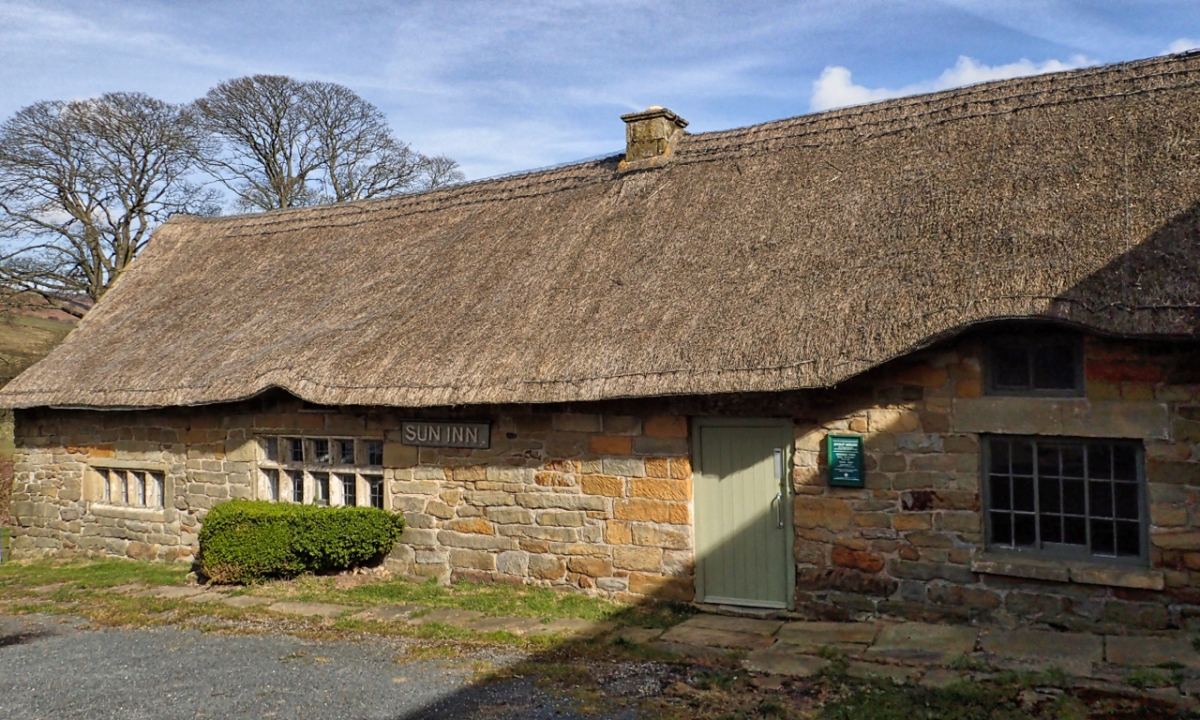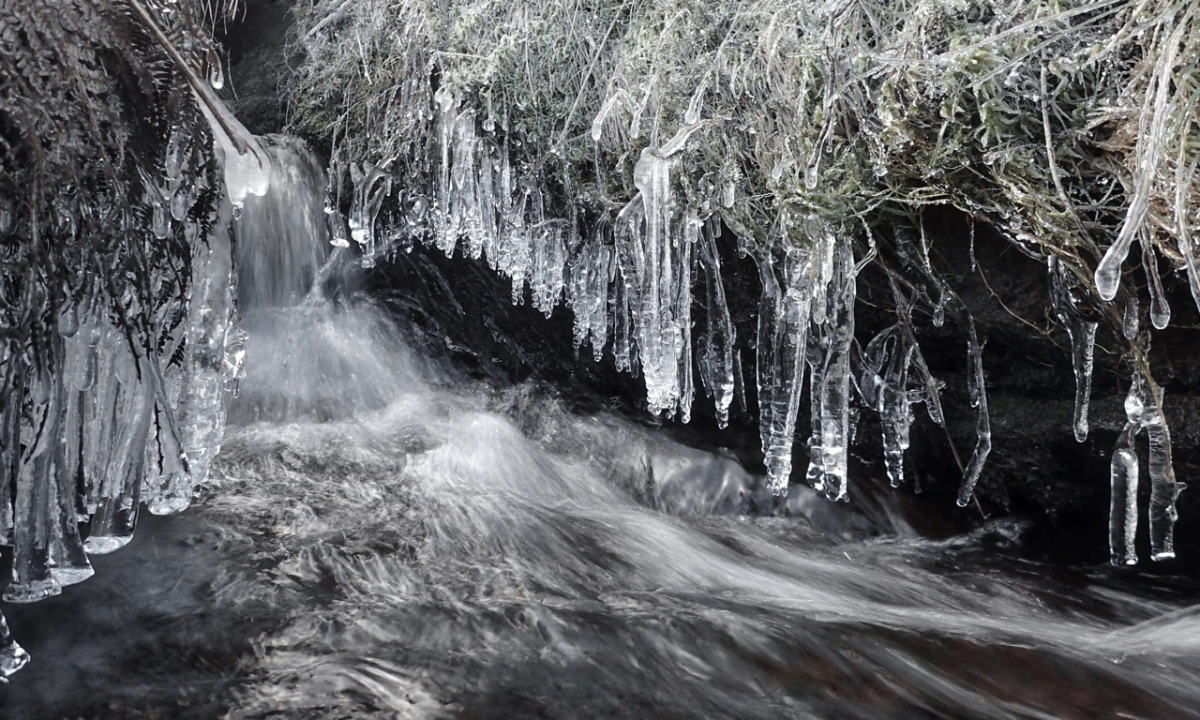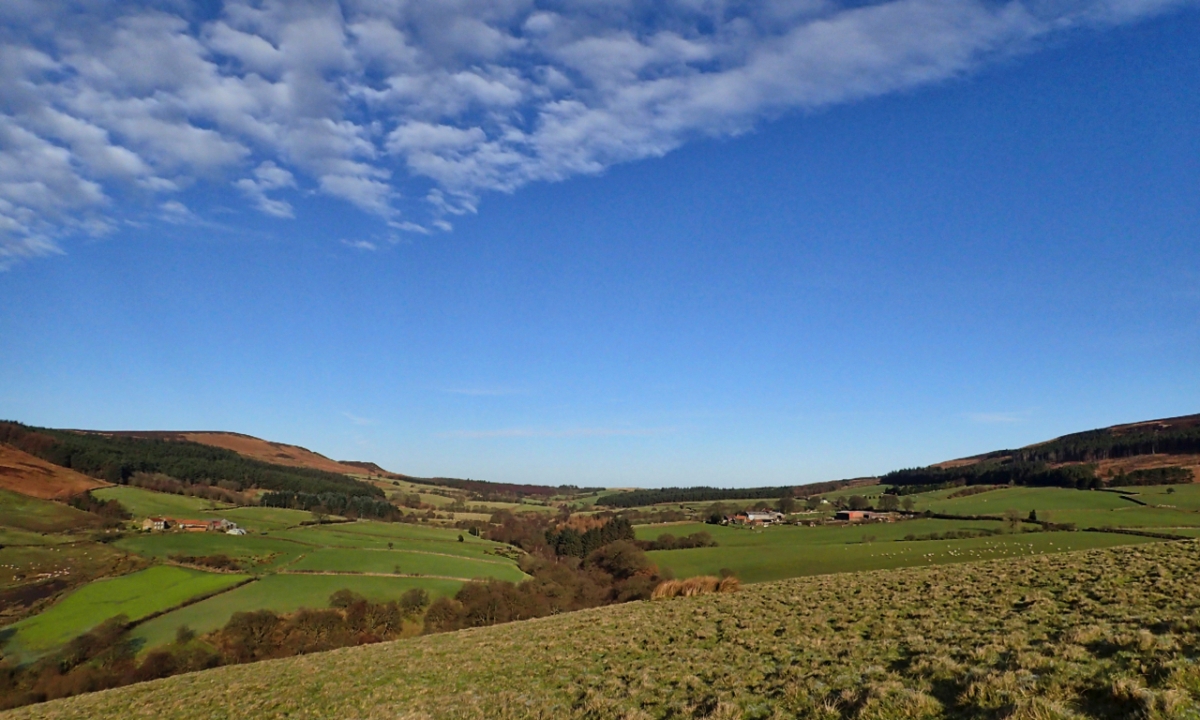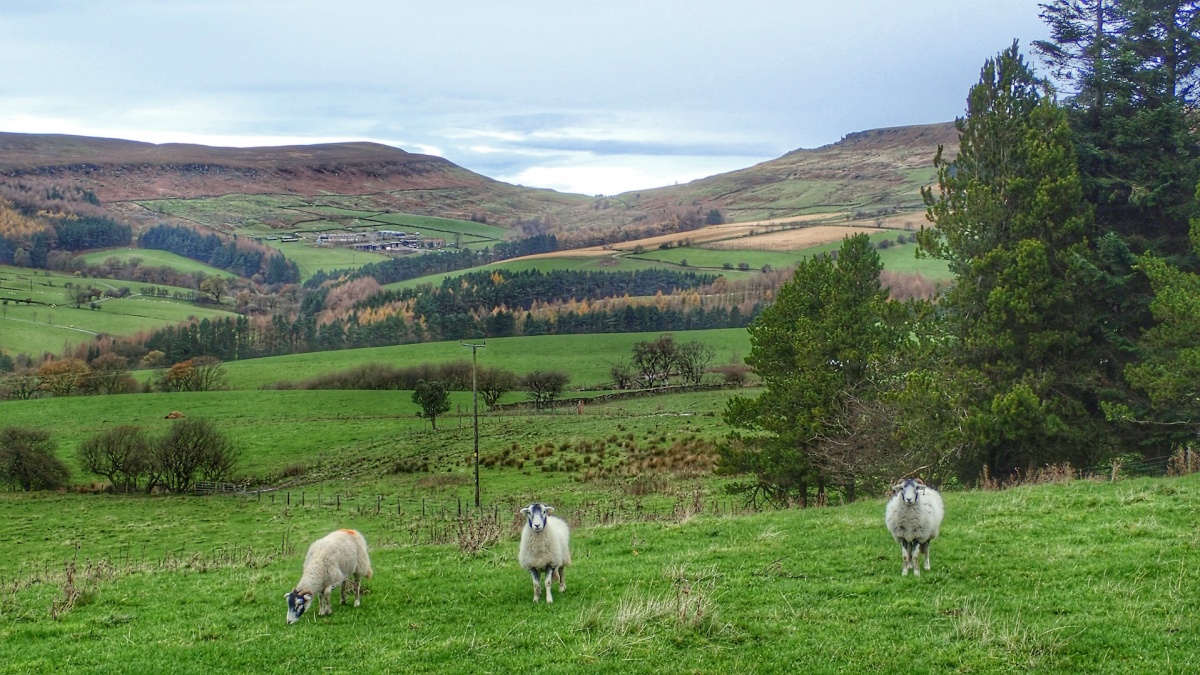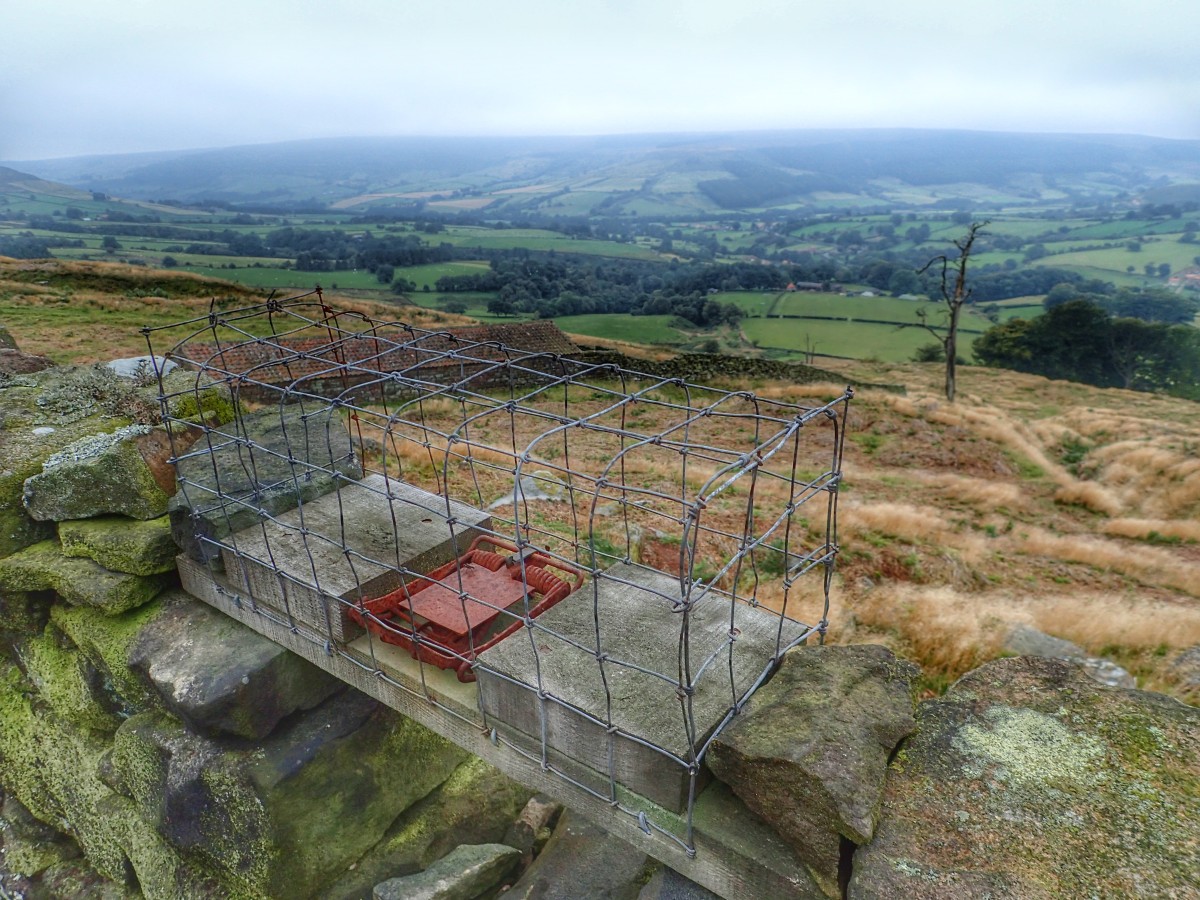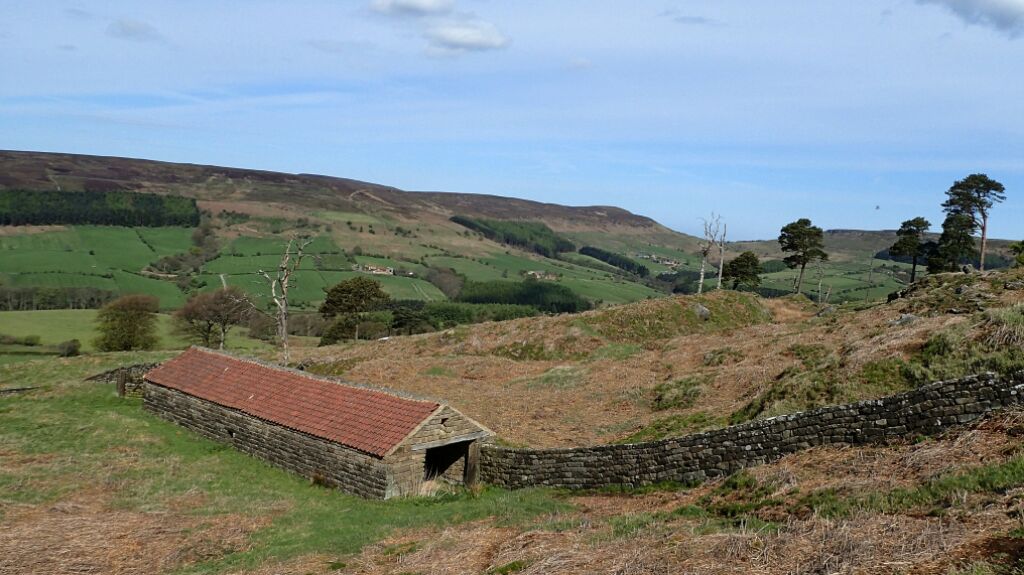It felt like spring today. Spout House is a fine example of a 16th century cruck framed farmhouse and according to Tom Scott Burns in his book Round and About the North York Moors it takes its name from a spring on the hillside behind the house. It comprises two pairs of crucks, which are naturally curving beams supporting the roof structure. Its a very traditional mediaeval method of construction. Originally a farmhouse with a dwelling one end and a byre the other, the building could date from 1550 at a time when the boy King Edward VI was on the throne but another source puts it later as 1606.
What is certain though in 1714 the resident farmer acquired a license to sell ale and was renamed as the Sun Inn replacing an earlier inn in Birch Wood a couple of miles down the dale. Diversification is not new. The last pint was served exactly 200 years later in 1914 when the new Sun Inn was built next door.
